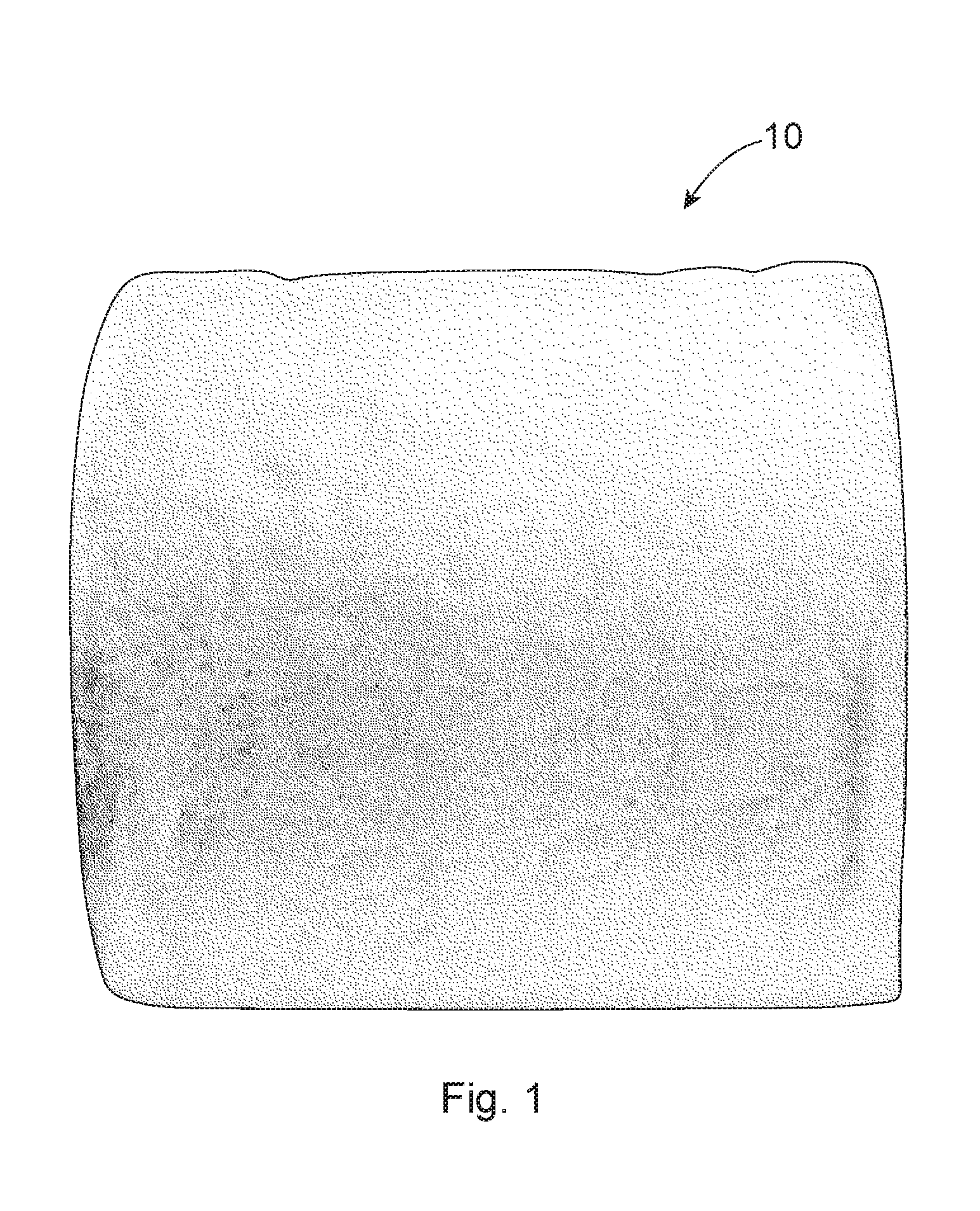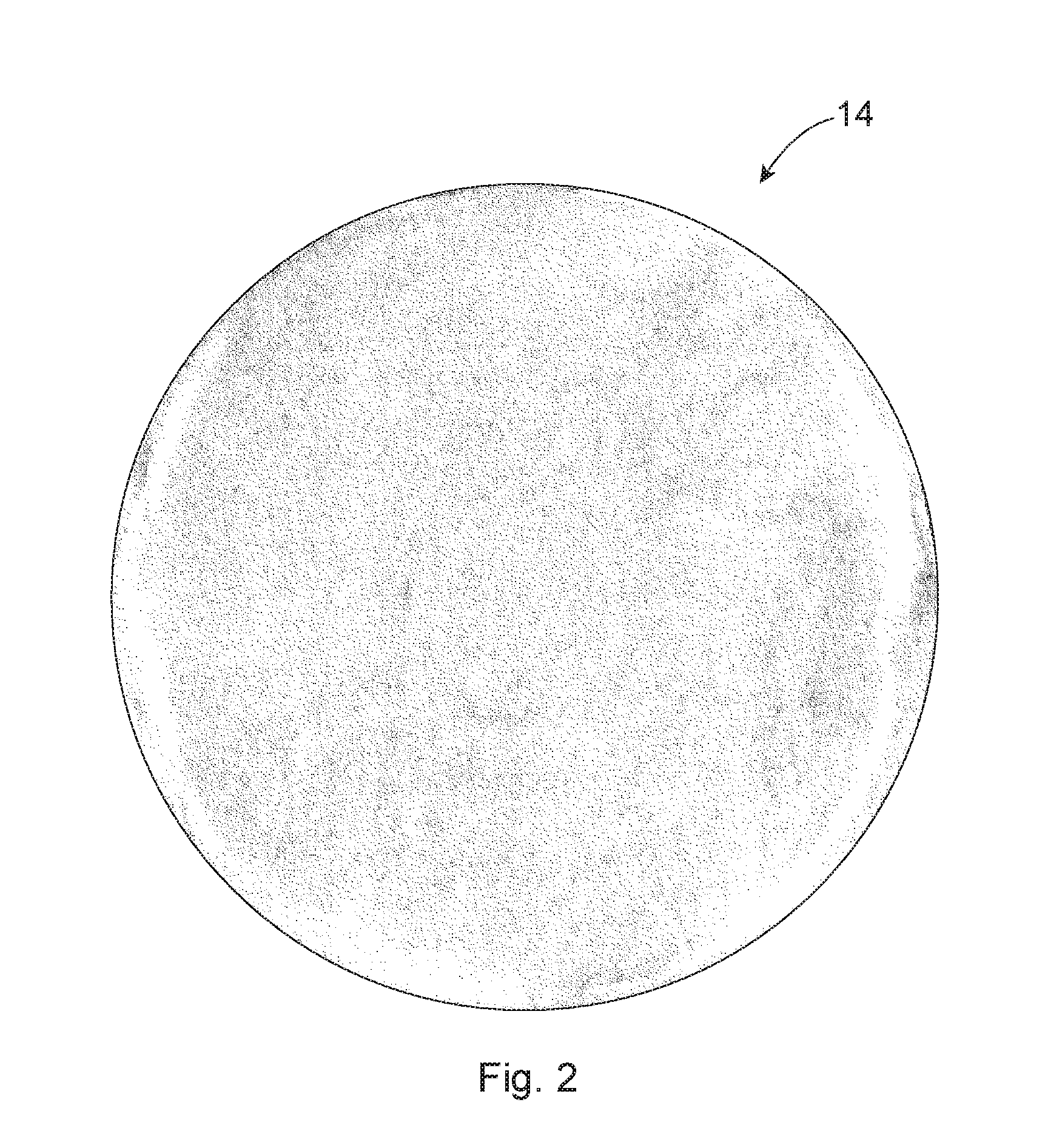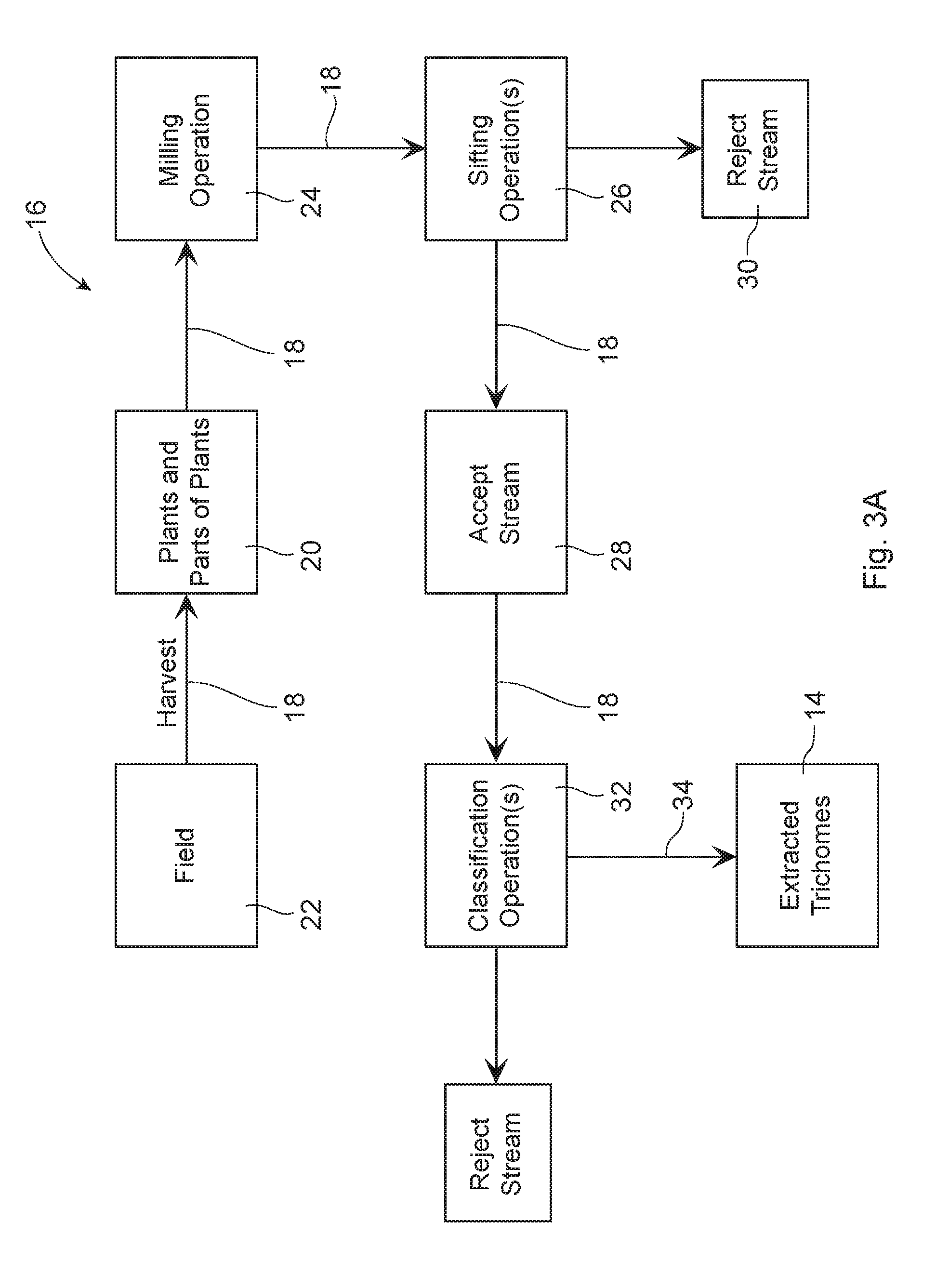Processes for Extracting Trichomes from Plants and Fibrous Structures Employing Same
a technology of fibrous structure and extracting process, which is applied in the direction of patterned paper, gas current separation, non-fibrous pulp addition, etc., can solve the problems of high maintenance costs, difficult to obtain “clean” trichomes in large amounts, and high cost of operations
- Summary
- Abstract
- Description
- Claims
- Application Information
AI Technical Summary
Benefits of technology
Problems solved by technology
Method used
Image
Examples
example 1
Fibrous Structure without Trichomes
[0161]The following example illustrates a non-limiting example for the preparation of a non-trichome containing fibrous structure on a pilot-scale Fourdrinier paper making machine.
[0162]A sheet with 33%×34%×33% layering consist of fabric layer, center layer and wire layer. The entire sheet has 70% by weight on a dry fiber basis of Eucalyptus and 30% by weight on a dry fiber basis of NSK pulp fibers is made.
[0163]An aqueous slurry of eucalyptus fibers is prepared at about 3% by weight using a conventional repulper. Separately, an aqueous slurry of NSK fibers of about 3% by weight is made up using a conventional repulper.
[0164]In order to impart temporary wet strength to the finished fibrous structure, a 1% dispersion of temporary wet strengthening additive (e.g., Parez® commercially available from Kemira) is prepared and is added to the NSK fiber stock pipe at a rate sufficient to deliver 0.3% temporary wet strengthening additive based on the dry we...
example 2
Fibrous Structure with Trichome Fibers
[0174]This following example illustrates a non-limiting example for the preparation of a fibrous structure according to the present invention on a pilot-scale Fourdrinier paper making machine with the addition of trichome fibers providing a strength increase.
[0175]The following Example illustrates a non-limiting example for the preparation of sanitary tissue product comprising a fibrous structure according to the present invention on a pilot-scale Fourdrinier fibrous structure making machine.
[0176]Individualized trichome are first prepared from Stachys byzantina bloom stalks consisting of the dried stems, leaves, and pre-flowering buds, by passing dried Stachys byzantina plant matter through a knife cutter (Wiley mill, manufactured by the C. W. Brabender Co. located in South Hackensack, N.J.) equipped with an attrition screen having ¼″ holes. Exiting the Wiley mill is a composite fluff constituting the individualized trichome fibers together wit...
PUM
| Property | Measurement | Unit |
|---|---|---|
| Fraction | aaaaa | aaaaa |
| Percent by mass | aaaaa | aaaaa |
| Percent by mass | aaaaa | aaaaa |
Abstract
Description
Claims
Application Information
 Login to View More
Login to View More - R&D
- Intellectual Property
- Life Sciences
- Materials
- Tech Scout
- Unparalleled Data Quality
- Higher Quality Content
- 60% Fewer Hallucinations
Browse by: Latest US Patents, China's latest patents, Technical Efficacy Thesaurus, Application Domain, Technology Topic, Popular Technical Reports.
© 2025 PatSnap. All rights reserved.Legal|Privacy policy|Modern Slavery Act Transparency Statement|Sitemap|About US| Contact US: help@patsnap.com



